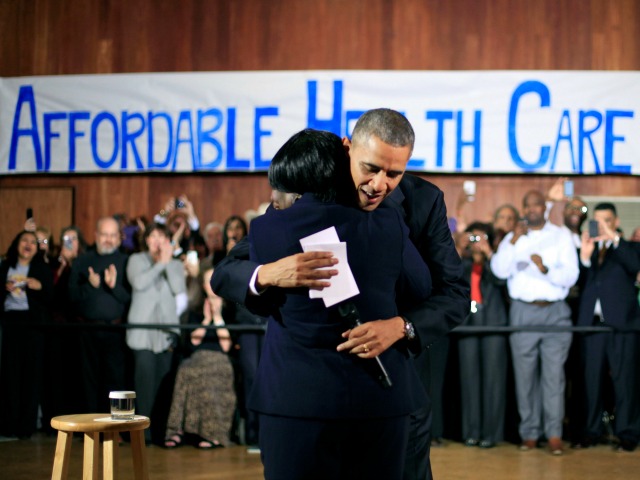According to a Department of Health and Human Services report dated June 18th, the average “qualifying applicant” for the Affordable Care Act (Obamacare) on the federal marketplace received a $264 taxpayer subsidy and is only required to pay an $82 premium. Only three out of every ten who signed up for “federal marketplaces” are paying a monthly premium of more than $100.
The Office of the Assistant Secretary for Planning and Evaluation published an update on June 18th, which stated that 69% of people who selected a plan through the federal marketplace with tax credits had a monthly premium of $100 or less, and 46% had a premium of $50 or less. Only 18% are paying $150 or more of the average $346 per month that Obamacare costs.
The report does not include data on state-run exchanges, but it does show that consumers were presented on average with at least five different insurance companies that featured 47 different plans on the federal Obamacare exchange. Of the four levels of care, the average enrollee chose the second cheapest.
Health and Human Services Secretary Sylvia Burwell said in a news release given to Al Jazeera, “What we’re finding is that the marketplace is working. Consumers have more choices, and they’re paying less for their premiums.”
Barack Obama campaigned in 2008 on a pledge to decrease the 30 million number that represented uninsured Americans. But according to Gallup polling’s “Well-Being Index,” the uninsured percentage of the U.S. population increased from 14.4% when Obama came into office in 2009 to 18% last year. Currently, it is at 13.4%. Given that the American population is 316 million, about 42.3 million are now uninsured.
Obamacare administrators have never released the number of people who are actually paying any portion of the discounted healthcare premiums for which they supposedly qualified. But they did acknowledge earlier this month that of the 8 million people supposedly enrolled in the program, more than 2 million have data discrepancies that indicate they may not be eligible for the taxpayer subsidies that they claimed to get lower cost premiums.
Most of the issues stemming from “discrepancies” are related to income, citizenship, or immigration status, according to a report by the New York Post. The inconsistency of information provided by applicants has resulted in a massive paperwork logjam at the Internal Revenue Service that was appointed to validate applicant qualifications. Many enrollees may have to repay the government or lose coverage if they received too large a subsidy.
The Department of Health and Human Services claims most of the “discrepancies” are due to outdated government data, and that the “vast majority” of cases are being resolved in favor of the consumer.
The author welcomes feedback and will respond to comments by readers.

COMMENTS
Please let us know if you're having issues with commenting.